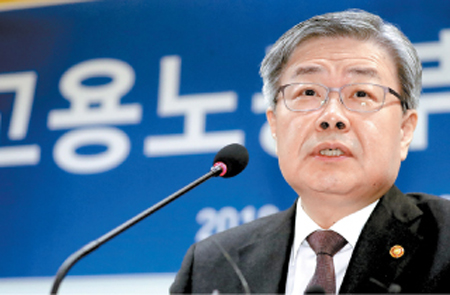Bringing elasticity to labor market

The author is an editorial writer of the JoonAng Ilbo.
In arguing the limits of the trickle-down model that used to drive the Korean economy, many point to data which show hiring has been rising at a slow pace while profits at large corporations have surged. Combined operating profits of the top 50 companies last year jumped 55 percent, while hiring has increased by a mere 1 percent. Politicians and the government accuse large companies of focusing on making money without making jobs.
In today’s automated and digitalized system, the number of workers no longer grows in parallel with business. Lee Jeong-mook, head of the union at petrochemical and battery maker SK Innovation, explained that his company requires people with skill and experience, not novices. Too many new recruits can cause safety accidents, he said.
Semiconductors and petrochemical are the only sectors driving our exports and growth these days. Despite their high shares in the gross domestic product, they do not contribute much in creating jobs. They enrich the national economy, but cannot help much with individual jobs. Like Lee said, their products mostly rely on an exclusive group of workers with expertise. Their army of specialized workers develops new products and technologies for the company and adds value. Their line of work is not a traditional field where output increases based on the number of people on the production line.
This phenomenon can be observed in the elasticity of employment, which refers to the job growth rate divided by real gross domestic product. It measures how much employment growth is associated with one percentage point of economic growth. In the second quarter, Korea’s elasticity of employment was 0.132, the lowest since a 0.074 reading in the first quarter of 2010. In the same period, Japan’s was at 2.178.
When seen as a golf ball, the Korean ball rises 13 centimeters (5 inches) when dropped on the floor, whereas the Japanese ball jumps 2.2 meters (7 feet 2 inches). A difference of 16.5 times cannot ensure an even match.
Labor policy, therefore, must focus on improving the elasticity of employment. The Korean labor market remains notoriously rigid, and thus Korea cannot sell effectively on a global basis.

Minister of Employment and Labor Lee Jae-kap makes a speech at a conference at the Sejong Government Complex on Monday. [NEWS1]
The government’s novel concept of driving growth through wage increases has only increased rigidity. Labor relations worsened to weigh on even the big companies and drove them to move some of their operations to other countries.
Various irregularities were built into the process of converting contract-based workers to permanent status at the Seoul Metro because once on the permanent payroll an employee’s job and paycheck are secure until retirement regardless of performance. When a union gets angry, the government and politicians rush to comfort. It is no wonder that companies fear hiring new recruits.
The number of jobs can only increase when companies do not fear hiring and workers are not afraid of changing their jobs. Flexible wage and work structures and various categories of jobs should be allowed. At the same time, social security must be improved for the protection of workers. Golfers say those who are not good at the sport are stubborn, slow or lazy. New labor minister Lee Jae-kap said jobs should be created by the private sector. That simple theory can solve many problems in the labor market — stubbornness, slowness and laziness.
It is the time we bring elasticity to the labor sector.
JoongAng Ilbo, Oct. 22, Page 27










with the Korea JoongAng Daily
To write comments, please log in to one of the accounts.
Standards Board Policy (0/250자)